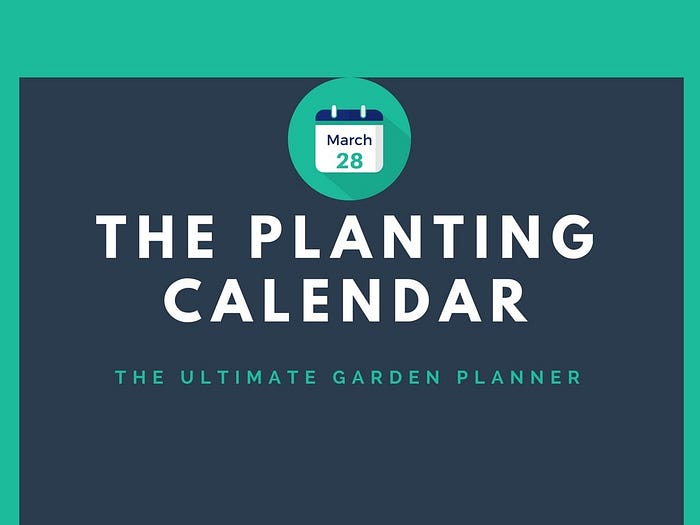How to Use Crop Rotation & Succession Planting
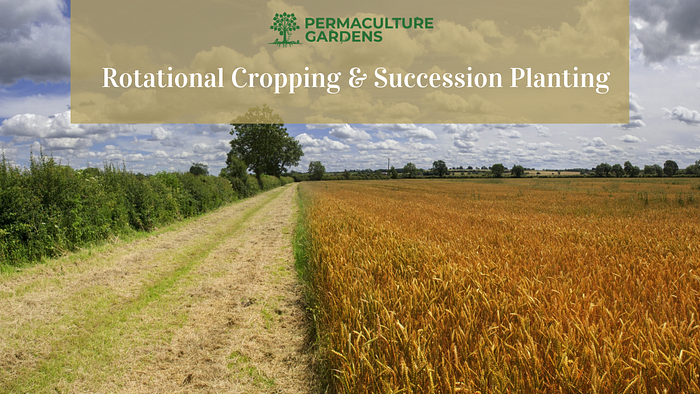
How to Use Crop Rotation & Succession Planting in your Backyard Garden
In the Planting Calendar, we figured out how to plant what and when.
But strategizing your garden by incorporating crop rotation and succession planning into your system decreases the likelihood of pests and disease and ensures a more abundant harvest. Let’s dig into these two strategies!
Once you’ve:
a.) Determined what plants you’d like to grow and,
b.) Have ideal times to plant those plants,
it’s time to combine this information with a little know-how on crop rotation.
What is Rotational Cropping?
Before the advent of fertilizers and pesticides (ironically called the “green revolution”), crop rotation was the traditional way farmers (back to Roman times) managed their lands.
The practice back then involved rotating the type of crops you planted in one field and occasionally leaving it “fallow” (no crops).
“To satisfy myself by inquiry from the best farmers of all the circumstances which may decide on the best rotation of crops; for I take that to be the most important of all the questions a farmer has to decide.”
THOMAS JEFFERSON
The Traditional 3-Crop Rotational System
During the middles ages, 90% of the English population was in agriculture. The 3-crop rotational system of farming was in wide use during the middle ages, made even more so innovations in the development of the plow.
Crop rotation helped for multiple reasons:
- After a season of heavy food production, planting a legume crop helped restore some of the soil’s depleted nitrogen.
- Leaving the field fallow allowed microorganisms that had died off from tilling the soil to recover.
- Planting different crops reduced pest populations that targeted specific crops.
Crop rotation is a way of caring not only for the humans that cultivate food but for the land upon which it is grown. There is an ecosystem below ground that supports the ecosystem above ground.
The practice back then involved rotating the type of crops you planted in one field and occasionally leaving it “fallow” (no crops).
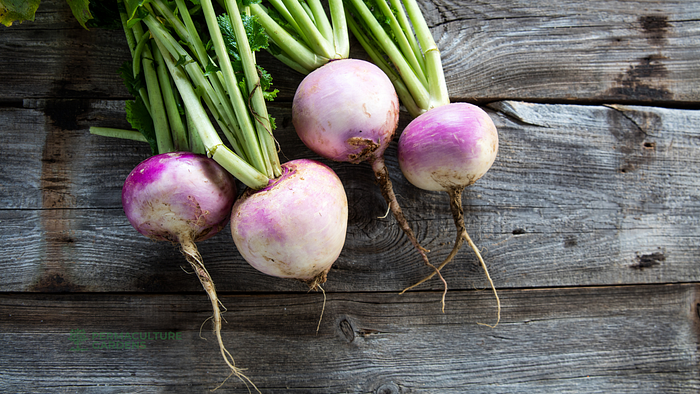
Charles Townshend’s 4-Crop Rotation
In the 17th century, English landowner, Charles Townshend, developed a four-crop rotation system.
This new way of rotating crops mixed in livestock feed crops such as turnips and clover in a fourth field. This introduction of clover added nitrogen back into the soil and turnips (or mangles) aerated it.
The primary use for those turnips, of course, was to feed their English landowner’s livestock. This fourth field shows us how we can “stack functions” to existing elements or strategies in our systems: A win-win for all!

“The Green Revolution”
The “Green Revolution” of the 1950s, which promised (and delivered) worldwide increases in yields of wheat, corn, and rice, did so to the detriment of biodiversity, ecology, and a loss of indigenous sustainable farming practices.
Even though we witnessed an initial spike in cereal production for several years, the Green Revolution also brought about the following detrimental outcomes:
- The widespread introduction and use of chemicals that killed the existing microbiology in the soil
- The loss of biodiversity in our crops. In our sense of taste. In our experience of food.
- The loss of biodiversity in plants also leads to a loss of biodiversity of the species they support
We are likely to see even more destructive repercussions of this worldwide initiative to increase yields on just a few crops. But in this article, we want to focus on only one of the many ill effects that have come about.
Because of the “ Green Revolution,” most Western agricultural systems have forgotten crop rotation techniques.
Thankfully, other countries in Asia and South America have successfully continued to experiment with multi-cropping methods such as “Intercropping,” “Sequential Succession,” and “Ratoon Cropping,” which we discuss below.
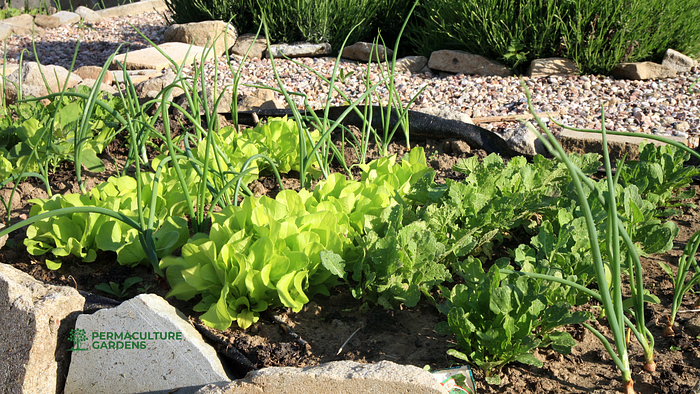
Intercropping
Intercropping or “alley cropping” is a system of planting alternating crops in the same space. Usually, we do this by using alternating rows in sustainable agriculture. But in small-scale gardens, we can do “mixed intercropping.” This is a kind of garden crop rotation.
In mixed intercropping, two complementary plants are grown in an alternate pattern. An example would be placing a nitrogen-fixing bean between a heavy nitrogen feeder like tomato or corn. These two plants complement each other in terms of function.
Another example would be to plant a row of quick-growing leafy greens like lettuce in between slow-growing tubers like carrots or leeks.
Because these two plants complement each other physically: They do not occupy the same root zones or growing space. The lettuce will fill out quickly and retain moisture for the carrots.
Indeed, this is one criterion we use for the selection of plants in our Permakits, our permaculture guilds in boxes!

Sequential Succession
Sequential (succession) cropping involves:
- Planting more than one crop in the same space within one year
- Planting one set of plants after harvesting the previous crop
The advantages of this technique are many:
- The crops mulch the soil. So you don’t have bare soil exposed to the elements.
- The previous crop’s decomposing roots and leaves retain nutrients and provide aeration.
- You can double or triple your harvest using the same space!
One good rule of thumb in choosing possible “sequential cropping” candidates is to pick plants that naturally prefer a particular season.
For example, you could plant an early crop of fava beans or peas in the spring that will naturally die down in the summer. You can then follow the fava beans with a late summer crop like melons or squash. These also happen to be heavy feeder crops that require a lot of nutrients to produce well.
The photo above shows the fall seeds that we started in July to fill in the gaps made by harvesting our summer carrots. This gave us a fall harvest of lettuces, thyme, and parsley (which in our Zone 7 climate, came back the following spring).
Here’s one of many sequential planting plans you can create.
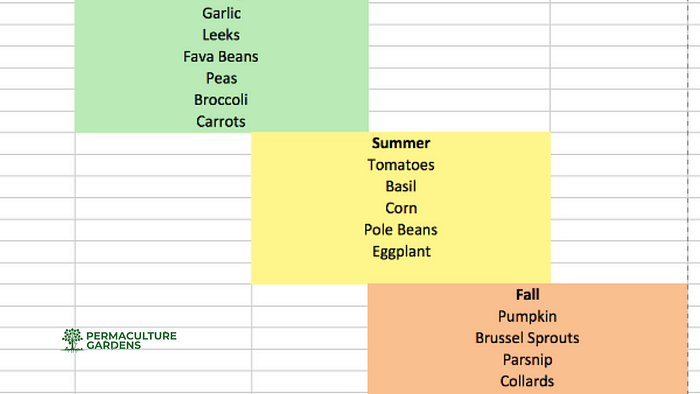
Hoop Housing
With some compost and leaf mulch amendments, you can practice sequential cropping through all four seasons.
High tunnels can extend the seasons in temperate climates through the winter. This season extension will allow you to grow three or four crops successively in one year. Learn how to build your own low tunnels and grow for all four seasons here.
Monoculture agriculture mainly focuses on measuring the amounts of chemical nutrients in the soil. But the reality is that soil with high organic content will retain most of the nutrients needed for plant growth (instead of them leeching away).
If you maintain healthy organic soil and include a diversity of crops in your rotation, you can get away with multi-cropping without soil fertility loss.
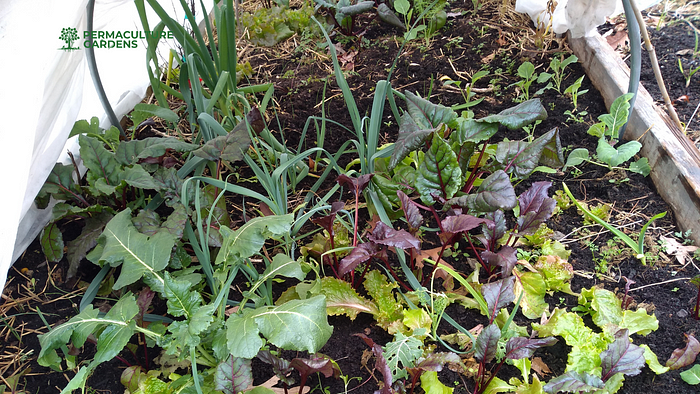
What is Rattoon Cropping?
Finally, there is a practice of partial harvesting of leaves and fruit back to the root stubble called ratoon cropping.
The illustration below is that of “pineapple ratoon cropping,” a method practiced by Hawaiians on their pineapple farms. After harvesting the first pineapple crop, the mother pineapple is left to produce a second (or even third) ratoon sucker that eventually becomes another fruit!
This is the default way in which we harvest our perennial veggies and fruit. But we can apply ratoon cropping to crops that we traditionally grow as annuals, such as kale or collards! All we need to do is keep ourselves from pulling the entire plant out, stump and all, but harvest only up to the base of the plant.
This advantage of only harvesting down to the plant base is that the plants already have an established root system and can grow for a second harvest much quicker than putting in a new crop.
Asian cultures use this method for crops like cotton, sorghum, and rice. But we can quickly adapt this to the backyard for annual veggies like chard, brassicas like kale or bok choy, and pigeon peas.
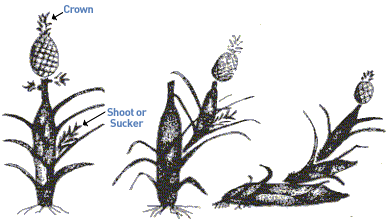
Dig Deeper
- This part 2/3 of a Planting Calendar Series of Blogs.
- The first part of this article is “Planning Your Planting Calendar.”
- The third part of this series can be found HERE, and further explains the topic of Sequential Planting
Ready to start your own planting calendar?
This year we have a Garden Planner for Cold-Weather Crops that we made specifically for Growing Zone 7 & 4. However, it comes with a blank template that you can fill in with the crops you’ve chosen to grow. Click HERE to learn more.

- Work out your own planting calendar by viewing the replay of The Planting Calendar, a workshop we gave a few years back.
